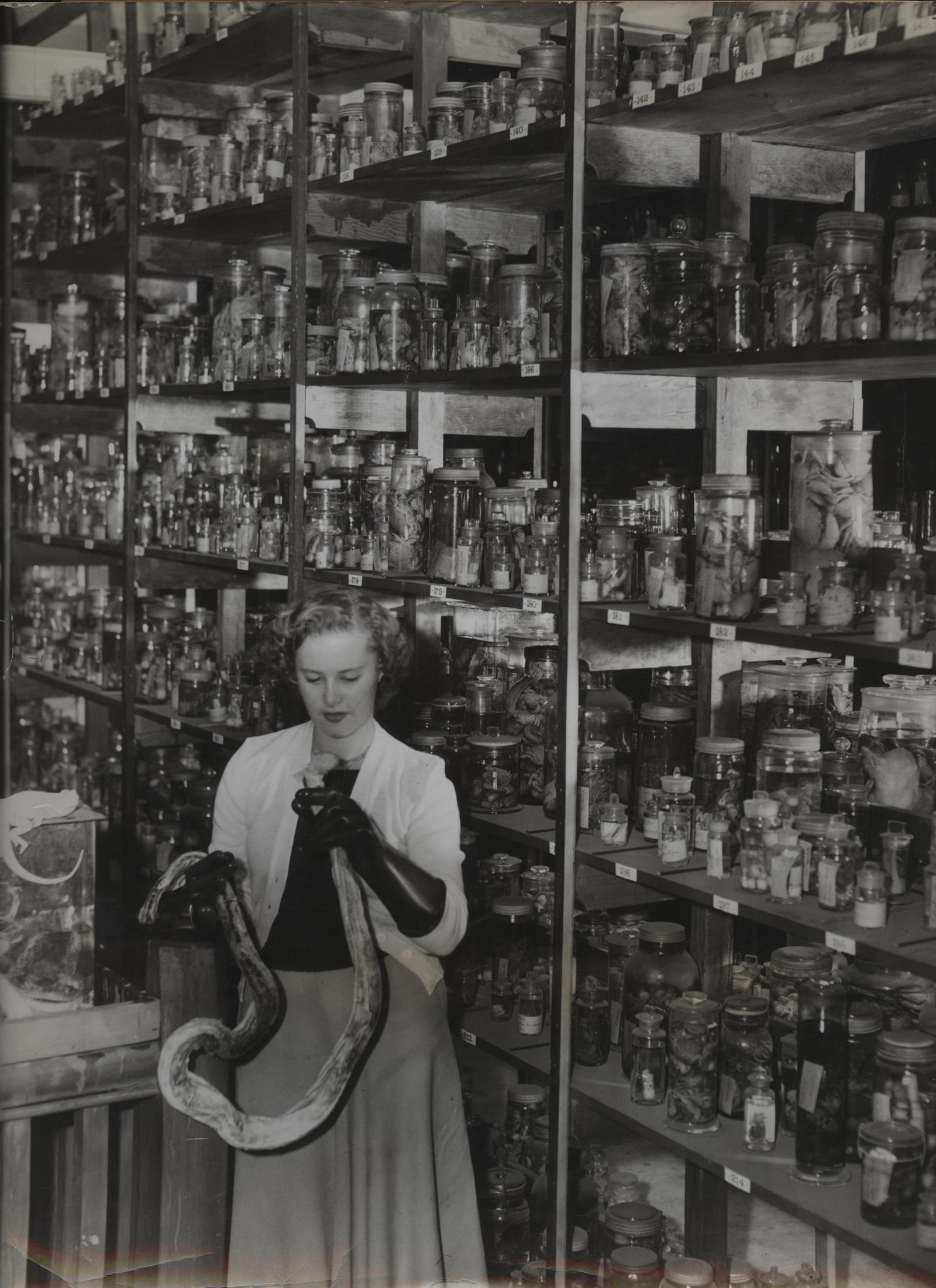That's the spirit: a short history of wet specimen storage at the Australian Museum
Glass jars containing translucent specimens are a common sight at any natural history museum. But the highly flammable ethanol that preserves the treasures inside must be carefully stored to prevent the collections going up in flames. Read on to learn about the history of the Australian Museum's 'Spirit House', the mysterious building where its wet collections are stored.
By Kimberley Russell, Archives intern.
One of the unacknowledged marvels of a Museum is to see preserved animals, some of which are blobby, translucent specimens floating in liquid. The glass jars are filled with some of the most scientifically valuable specimens in the world, from the extinct thylacine to the hard corals of the Great Barrier Reef. The work involved in preserving these ‘wet’ specimens, as they are known, is not only far less intensive than stuffing or mounting an animal but also allows for the whole animal to be preserved.
Consequently, since the 17th century collectors and scientists have stored animals in ethanol-filled jars building up considerable ‘wet’ collections. Although ethanol is not perfect (it can cause colour to drain from the specimen) it is inexpensive, accessible, and safer than other alternatives such as formalin. When stored properly in ethanol, a wet specimen can be preserved for hundreds of years. Without this vital preservation solution, the specimen quickly deteriorates. The down-side - ethanol, or “spirit” as it was commonly called, is both flammable and toxic.

Staff member at work in the spirit house, circa 1950s.
Image: -© Australian Museum
Since the 1850s when collection building began in earnest, the Australian Museum accumulated an enormous number of ‘wet’ specimens. Therefore in 1895 the Trustees of the Museum requested Parliament provide funds for an extension to the Museum that would include the creation of a “Spirit-room” to safely house these specimens separately from the rest of the Museum's collections.
The design was for a one storey stone building to be constructed under the supervision of Mr Robert Wall of Newtown. In 1896 building work began on the new Spirit House which was situated in what was then the Museum's outside courtyard/quadrangle (now the Hintze Hall). It was completed the following year and by the end of 1898 all specimens preserved in spirits had been safely and securely rehoused from their home in the old shed to the new Spirit House.
Demand for storage in the Spirit House grew steadily over time. By 1926 there was an urgent need to expand the building so the Trustees requested the Department of Public Works for funding to add a second storey to the building to provide the required shelving. These additions to the Spirit House were completed by 1929. As the collection continued to expand, concern once again grew over the overcrowding in the existing Spirit House; in 1961 a new structure featuring four floors for storage and two floors for workshops or garages was proposed.
By 1967 construction was underway of a new building in the southwest corner of the Museum’s grounds. The new building was completed by August 1969, featuring new compactus style movable storage shelves on rails that effectively doubled the available storage space. In November 1969, the new Spirit House was renamed The Spirit Block.
Today, there are approximately 1.3 million containers in the Australian Museum wet collection. This world renowned biodiversity library is used by not only Australian researchers but also scientists from around the world – all helping us to understand and conserve the world around us. To ensure the longevity of the collection staff continue to regularly ‘top up’ wet specimen containers with new ethanol solution to prevent the specimens from drying out.
The safety concerns around ethanol remain just as valid as they were in 1895, and access to the Spirit House is limited only to staff who manage and use the specimens inside it. For the rest of the Museum staff, the Spirit House sustains the aura of its name: mysterious, elusive, and unknowable.
Special thanks to Laetitia Gunton and Prue Walker for their assistance with this article.




